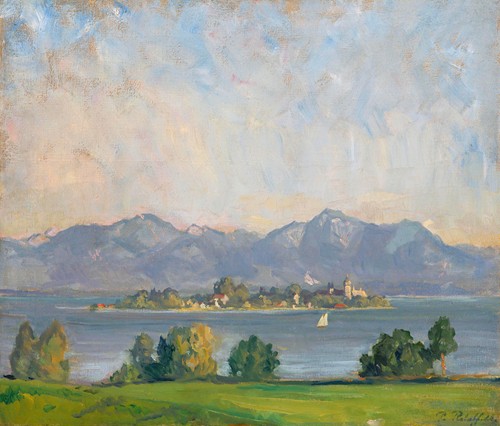

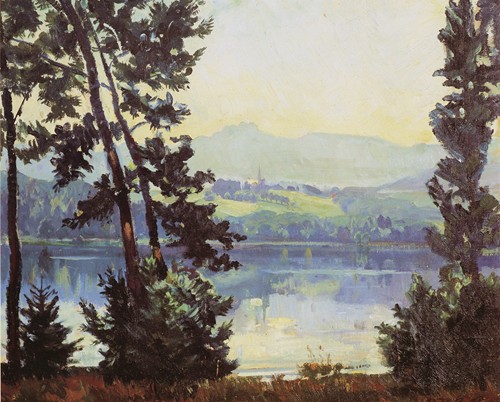
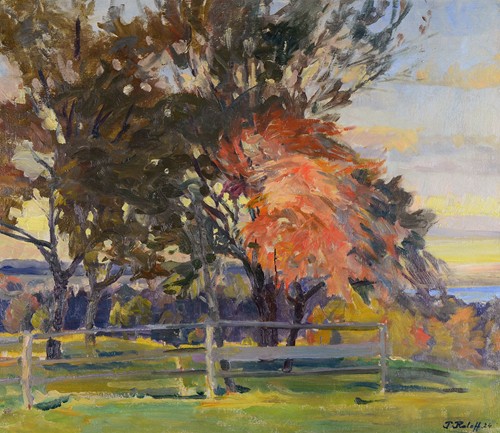
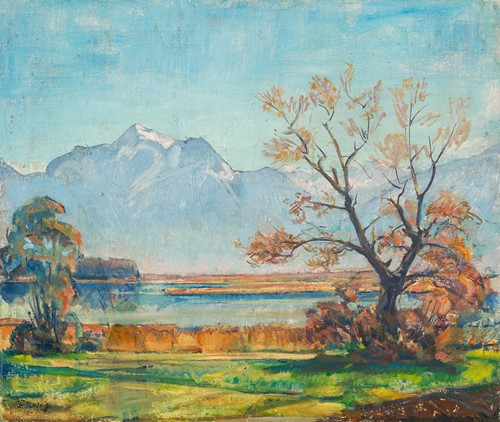
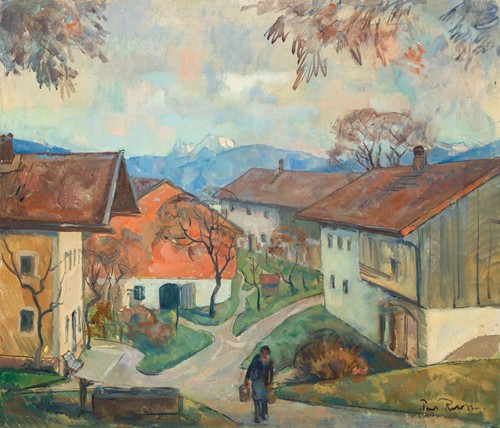
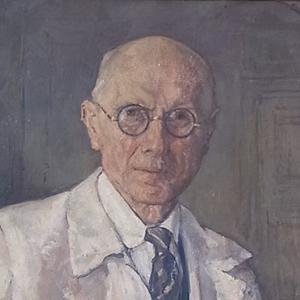

Paul Alexander Roloff was a German painter.
Paul Roloff was the youngest of five children born to the merchant Adolf Roloff and his second wife Elisabeth.
After graduating from high school, he enrolled at the Munich School of Architecture in 1898, initially at his father's request. His teacher, Professor Friedrich Thiersch, the builder of the Munich Palace of Justice, lobbied his reluctant father to allow Roloff to become a painter after all. On November 2, 1898, he was able to enrol in the nature class at the Royal Bavarian Academy of Fine Arts in Munich. His teachers included Karl Raupp, Moritz Weinholdt, Ludwig Schmid-Reutte and Franz von Stuck. He also studied for a semester at the Grand Ducal Art School in Karlsruhe under Friedrich Fehr.
After completing his studies, his father cut off his monthly allowance. He wanted his son to become financially independent as quickly as possible. Inspired by his painter friends Erich and Rudolf Wilke, he produced his entire graphic work. He created drawings for Simplicissimus, Jugend and, above all, Affenspiegel, the title page of which he designed.
As Munich was Paul Roloff's adopted home, he completed his military service in the 1st Field Artillery Regiment "Prinzregent Luitpold" of the Bavarian Army in 1902.
In 1905, he moved into a studio at Hohenzollernstrasse 50 in Munich-Schwabing with the draughtsman Erich Wilke and the sculptor Ulfert Janssen. It became a meeting place for a large circle of friends and artists, including Paul Bonatz, Wilhelm Koeppen, Rudolf Wilke, Julius Heß, Rudolf Hause, Rudolf Esterer and Adelbert Niemeyer.
In 1907, Roloff married the Norwegian Aagot Lindeman; their three daughters Berit, Anna and Elisabeth were born in 1908, 1912 and 1915. He moved into a studio apartment at Adalbertstraße 55, where he had two studios for a time. He rented one of them to Christian Rohlfs in 1909.
The years up to 1914 were characterized by numerous trips, for example to Norway in 1910 and Denmark in 1913; he spent his summer vacations in Seeon in 1912 and at Lake Chiemsee in 1914. It was there that he was called up to join his regiment on the Western Front in the First World War. He was wounded several times and was shot through the hip in 1918, which affected him for the rest of his life. The family moved to Törwang am Samerberg after their Munich home was confiscated. There, the eldest daughter died of Spanish flu in 1918.
The poor economic situation in the country initially gave him no opportunity to earn a living for his family with painting. So he bought the Aich farm near Prutting and worked as a farmer. But he could not let go of painting. In 1921, he sold Aich and bought a house in Stock near Prien am Chiemsee.
There he founded the artists' group Die Welle with Bernhard Klinkerfuß, Karl-Hermann Müller-Samerberg, Emil Thoma, Paula von Goeschen-Roesler and Friedrich Lommel. The association built its own art building on the Stocker Schären under extremely difficult financial conditions in order to provide sufficient exhibition space for each member.
Until the economic crisis of 1929, Roloff received an increasing number of commissions from northern Germany for paintings and portraits. He was now recognized and earned well. As a result of the global economic crisis in 1929, there were many cancellations and it was not until the mid-1930s that things began to pick up again.
His exhibition at the Munich Kunstverein on the occasion of his 60th birthday together with Gabriele Münter and Hans Reinhold Lichtenberger was a great success with excellent reviews; however, the pending appointment as titular professor was postponed until 1939. Roloff was not a member of the NSDAP and remained on the board of the Protestant church in Prien.
Roloff was represented at five major German art exhibitions in Munich from 1937 to 1944. His painting Münchner Kellnerin (Munich Waitress), exhibited in 1938, was purchased by Adolf Hitler for 2000 Reichsmarks. From 1941, he exhibited pictures of fallen soldiers in uniform, which he had painted from photographs on behalf of his parents. These were selected by the jury of the Haus der Kunst and renamed in line with Nazi war ideology, such as Der Bataillonsführer in 1943 and Gebirgsjäger der Waffen-SS in 1944.
After the war, paint was hard to come by. The house in Prien was full of refugees. Roloff was seriously ill with a heart condition and his war injury kept bothering him. He died in his house on May 29, 1951.





